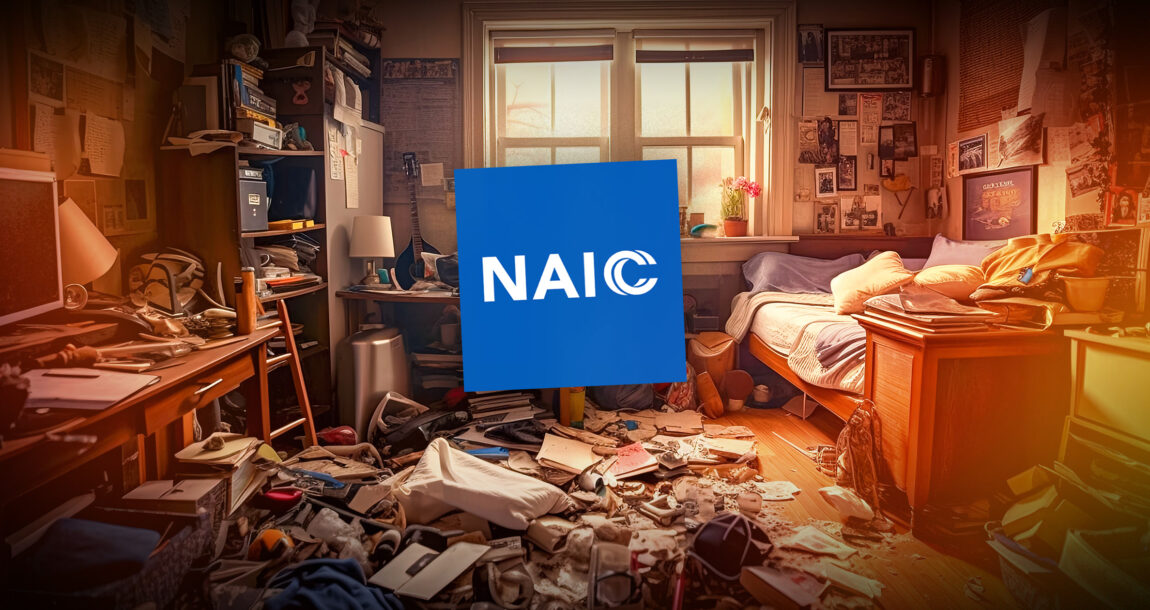Commentary: The NAIC must get its house in order

In 2012, then-Congressman Ed Royce (R-Calif.) wrote to the Federal Insurance Office, noting that “very few checks exist today on the [National Association of Insurance Commissioners].” Nearly a decade later, that remains the case. And now, NAIC staff members are attempting to grab even more power, threatening the institution’s credibility and risking real harm to consumers and insurance markets for years to come.

The NAIC is not a federal regulatory agency. If it were, it would be subject to the kind of oversight that is expected of such entities. There would be checks on the NAIC’s multi-million-dollar budget. There would be regular reviews of their operations and structure. Their email communications would be subject to the Freedom of Information Act. Their policy proposals would be subject to federal public notice and comment and cost-benefit analysis requirements.
Instead, the NAIC is a standard-setting organization ostensibly run by state-level insurance regulators from across the country. But in reality, self-dealing NAIC staffers are pushing policies based on their own agendas. This setup allows unaccountable staff at the organization to effectively dictate policy to all 50 states with virtually no oversight. The inherent problem with this model has raised red flags for years as this pseudo-regulatory body has been able to pick winners and losers in the marketplace.
This dynamic has been fueled by a revolving door between the NAIC and the insurance industry that has gone on for decades, as industry insiders seize the opportunity to influence the rules their once or future employers play by.
And now, new efforts are afoot to consolidate even more power within the organization. One recent proposal would allow the NAIC’s Securities Valuation Office to overrule the ratings set by official credit ratings agencies such as Moody’s and S&P. Although this may not sound like much at first blush, if we look closer, it certainly proves to be an overreach that would “undermine market competition through their unfair competitive advantage,” according to a July 2023 letter from members of Congress.
This represents a significant shift from the NAIC’s current role, which should serve as a forum to support consensus among the states — not an operation that competes with states to regulate their domestic industry. Even if such a shift were permissible under state constitutions and voters in those states allowed it, it is a major change that should require a strong consensus among elected and appointed insurance regulators, which I don’t believe there is.
What’s more, such a huge undertaking would require a large infrastructure with highly technical professionals, especially to justify significant additional power and authority, as well as the ability to procure new fees from industry in perpetuity. Frankly, unelected career staff at the NAIC are in no position to compete with state regulators or with credit rating agencies. State regulators are accountable to insurance policyholders and governors, and credit rating agencies are highly regulated at the federal level for good reason. Additional power and authority cannot come without additional accountability.
Every December, the NAIC’s top leadership positions turn over, which makes December a natural time to consider organizational direction. This is especially important as the organization is currently without a chief executive officer to keep staff in check. The new leadership slate at the NAIC, including incoming president Andy Mais of Connecticut, have an opportunity to right the ship before it’s too late.
A simple step in the right direction would be addressing the blatant conflict of interest that results from allowing NAIC vendors — who do not hold elected or appointed positions in their state — to also serve as voting members of NAIC committees. A next step would be halting the NAIC’s plan to fashion itself into a credit rating agency, a function that is best left to federal licensed and regulated rating agencies, not an organization that has repeatedly proven it will act only in its own best interest.
From the outside, we could use another Ed Royce in Congress — someone who is willing to hold the NAIC accountable and ensure that the organization enhances the state regulatory system rather than undermines it.
As someone who served in the state legislature and was proud to be elected twice as Georgia’s insurance commissioner, I know what it means — and why it’s so important — to be accountable to the public. For the sake of consumers and competition, the NAIC should choose a new direction in 2024. It’s time to reestablish the NAIC as an even-handed resource for insurance commissioners instead of a captured pseudo-regulator.
Ralph Hudgens served as Georgia’s insurance and safety fire commissioner from 2011 to 2019. He also previously served as a member of the Georgia Senate from 2003 to 2011 and the Georgia House of Representatives from 1997 to 2003. Contact him at [email protected].
© Entire contents copyright 2023 by InsuranceNewsNet.com Inc. All rights reserved. No part of this article may be reprinted without the expressed written consent from InsuranceNewsNet.com.





Little progress for regulators on LTC rate review standard
58% of life insurers use artificial intelligence or are interested: NAIC survey
Advisor News
- Does your investor client know how much they pay in fees?
- Get friends to do business: 2 distinct approaches
- Unlocking hidden AUM: Prospecting from within your client base
- Protests in D.C. Take Aim at Health Insurance, Financial Institutions, Oil & Gas Interests
- Charitable giving tools available for taxpayers; due to expire
More Advisor NewsAnnuity News
Health/Employee Benefits News
- Genworth and CareScout Release Cost of Care Survey Results for 2024
- Ensight and Luma Financial Technologies Partner to Transform the Life & Annuity Sales Experience for Financial Professionals
- Social Security & You: Older people and Social Security disability
- GOP lawmakers commit to big spending cuts, putting Medicaid under a spotlight – but trimming the low-income health insurance program would be hard
- UnitedHealth says execs kept no secrets, asks court to toss lawsuit
More Health/Employee Benefits NewsLife Insurance News